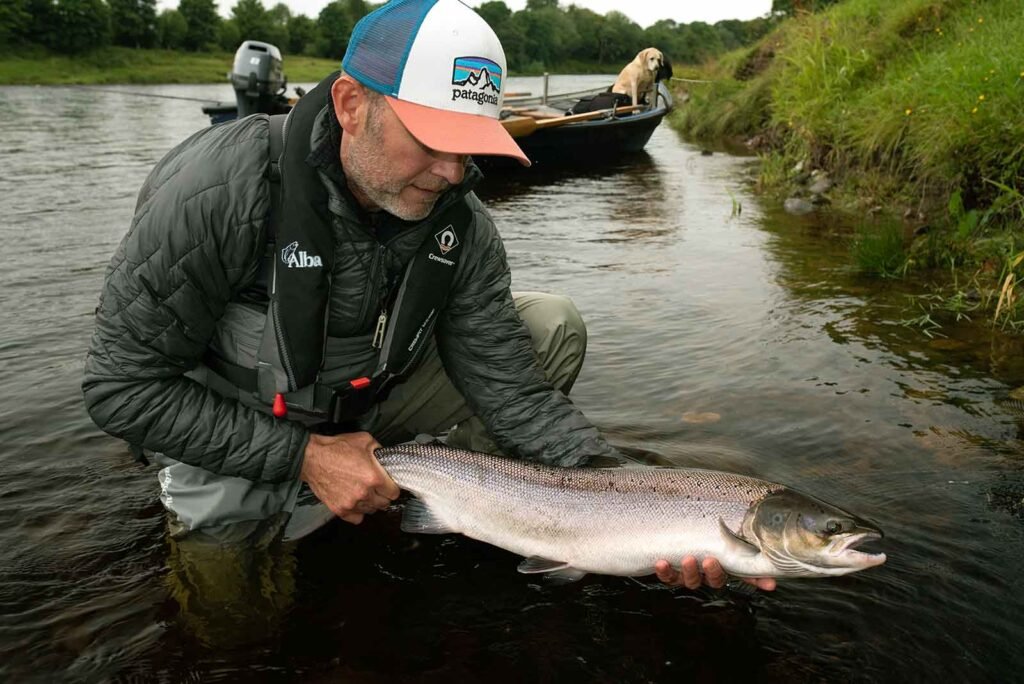Mastering the best salmon fishing techniques is essential for increasing your chances of a successful catch. Here’s a comprehensive guide on the most effective methods for salmon fishing.
Understanding Salmon Behavior
To effectively fish for salmon, it’s crucial to understand their behaviour. Salmon are migratory fish that travel from the ocean to freshwater rivers and streams to spawn. They are known for their strong sense of smell and ability to navigate using environmental cues. Understanding their feeding habits, preferred habitats, and migration patterns helps in choosing the right techniques and locations for fishing.

Best Salmon Fishing Techniques
Drift Fishing
Drift fishing is a popular and effective technique for salmon fishing. This method involves drifting your bait or lure with the current, allowing it to move naturally through the water. To drift fish effectively, cast your line upstream and let it drift downstream while maintaining a tight line. This technique works well in rivers and streams where salmon are held in deeper pools or near structures. Natural baits like salmon eggs, shrimp, or worms are commonly used for drift fishing.
Fly Fishing
Fly fishing for salmon is both challenging and rewarding. This technique involves using artificial flies to mimic the natural prey of salmon. Fly fishing requires specialized equipment, including a fly rod, reel, and line. Casting a fly accurately and presenting it in a lifelike manner is key to enticing salmon to strike. Wet flies, nymphs, and streamers are commonly used for salmon fly fishing. This technique is particularly effective in clear, shallow waters where salmon are easily spooked.
Trolling
Trolling is a versatile technique suitable for both freshwater and saltwater salmon fishing. This method involves dragging lures or baits behind a moving boat. Trolling allows you to cover a large area and locate actively feeding salmon. Downriggers, planer boards, and diving devices can be used to control the depth of your lures. Popular trolling lures include spoons, plugs, and hoochies. Adjusting your trolling speed and experimenting with different lure colours and sizes can help attract salmon.
Casting and Retrieving
Casting and retrieving is a straightforward technique that works well in various fishing environments. This method involves casting your lure or bait into likely salmon-holding areas and retrieving it with a steady or varied motion. Spoons, spinners, and crankbaits are effective lures for casting and retrieving. Pay attention to the speed and pattern of your retrieve, as salmon may respond differently based on their activity level and the conditions.
Using Salmon Fishing Rigs
Incorporating specialized salmon fishing rigs can enhance your effectiveness. For example, using a drift rig with a float can keep your bait at the desired depth while you cast and retrieve. This setup is particularly useful in rivers where you want your bait to drift naturally with the current. Adjust the rig based on the fishing environment and the behaviour of the salmon you’re targeting.
Jigging
Jigging is a productive technique for targeting salmon in deeper waters. This method involves vertically lifting and dropping a weighted jig to mimic the movement of injured prey. Jigging works well in lakes, reservoirs, and deeper river sections where salmon are held. Choose jigs in bright colours and experiment with different jigging speeds and patterns to find what works best.
Using Live Bait
Live bait can be highly effective for salmon fishing, especially when targeting specific species. Common live baits include herring, anchovies, and sand shrimp. When using live bait, it’s important to rig it properly to ensure a natural presentation. Hook the bait securely but allow enough movement to attract salmon. Live bait can be used in various techniques, including drift fishing, trolling, and casting.
Reading the Water and Adapting
Successfully fishing for salmon requires keen observation and adaptability. Continuously read the water for signs of salmon activity and adjust your fishing tactics accordingly. If one technique isn’t producing results, be willing to switch to another. Salmon behaviour can change throughout the day and under different conditions, so staying flexible is key to success.
Handling and Landing Salmon
Once you hook a salmon, handling and landing it requires skill and patience. Use your rod’s action and the reel’s drag system to tire the fish out, avoiding abrupt pulls that could cause the line to break. Maintain steady pressure and be prepared for sudden runs. When the salmon is close enough, use a landing net to secure it. Handle the fish carefully, especially if you plan to release it, to minimize stress and injury.
Conclusion
In conclusion, mastering the best salmon fishing techniques involves understanding salmon behaviour, choosing the right method for the conditions, and being adaptable on the water. Whether you prefer drift fishing, fly fishing, trolling, casting and retrieving, jigging, or using live bait, each technique offers unique advantages. By experimenting with different methods and paying attention to the behaviour of the salmon, you can increase your chances of success and enjoy the thrill of landing these powerful fish. Remember to handle and release salmon carefully to ensure their survival and contribute to sustainable fishing practices. With practice and patience, you’ll become proficient in using these techniques and enhance your salmon fishing experience.




